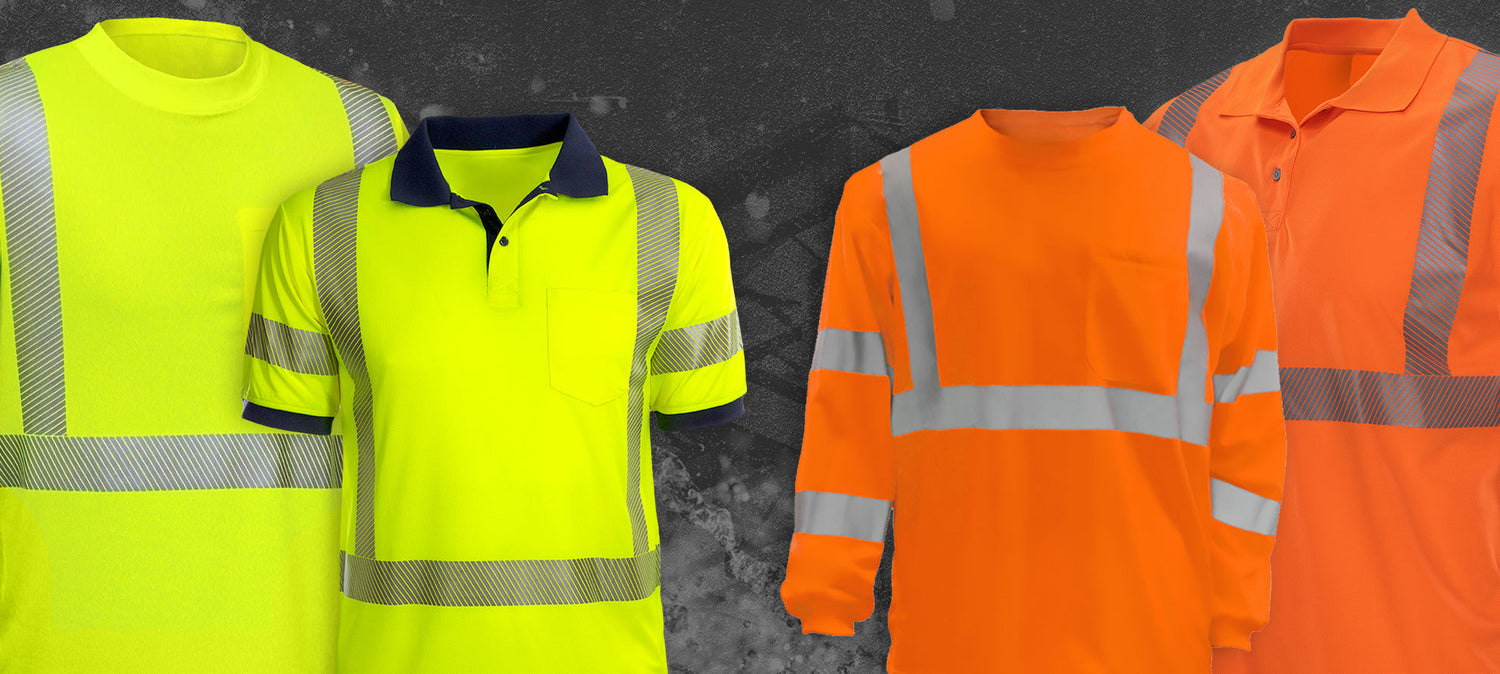What you wear could be the difference between being seen and being struck in hazardous work environments. Being visible is a fundamental safety requirement for workers in construction zones, roadside operations, utility maintenance, and emergency response.
But what are the most effective high visibility colors to keep you safe? From the shade of the fabric to the placement of reflective tape, even small differences can drastically impact visibility, compliance, and worker protection. With strict industry standards, choosing the right high-visibility color becomes a strategic decision for safety officers, procurement teams, and team leads across industrial sectors.
High Visibility Colors: What Does ANSI/ISEA 107 Require?
The ANSI/ISEA 107 standard governs the design and performance of high-visibility safety apparel in the United States. It outlines what qualifies as compliant gear for general industry and high-risk work zones.
Key Compliance Features:
-
Fluorescent Base Colors: Yellow-green, Orange-red, or Red (mostly used in Europe)
-
Reflective Tape Configuration: 360-degree visibility
-
Durability Requirements: Maintains brightness after 25+ washes
-
Minimum Surface Area: Defined by Class 1, 2, or 3 designations
-
Environmental Testing: Performance under artificial light and natural light
Explore our full ANSI Safety Apparel Collection.
Neon Yellow vs. Neon Orange: Which High-Vis Color Performs Best?
Choosing between neon lime/yellow and fluorescent orange-red depends on the contrast with the surrounding environment.
Lime-Yellow
-
Stands out in urban and industrial areas
-
Ideal for low-light indoor spaces, warehouses, and construction zones
-
Easy to see against asphalt, steel, and concrete
-
Popular in Yellow Safety Shirts, Hoodies, and Utility Uniforms
Orange-Red
-
Highly visible in green landscapes and natural backgrounds
-
Common on roadside crews, flaggers, and surveyors
-
Creates contrast against grass, dirt, and trees
-
Featured in Orange Safety Vests and Jackets
Color Visibility in Daylight, Dusk, and Artificial Lighting
Visibility isn’t static—it changes based on the time of day and lighting conditions. ANSI-approved colors are specifically chosen because they excel across multiple lighting environments:
|
Lighting Condition |
Best Performing Color |
Why It Works |
|
Daylight |
Lime-Yellow |
Fastest recognized color to the human eye |
|
Dusk/Dawn |
Orange-Red |
Provides high contrast against muted natural tones |
|
Nighttime (with lighting) |
Either + Retroreflective Tape |
Reflective stripes bounce light to maximize visibility |
All Reflective Apparel products meet retroreflective tape placement standards for Class 2 and 3, ensuring 360° nighttime visibility.
Choosing the Right Hi-Vis Color by Job Role
Each job has unique visibility challenges. Here’s a quick guide based on role:
|
Job Role |
Recommended Color |
Suggested Collection |
|
Construction Foremen |
Lime-Yellow |
|
|
Road Crews |
Lime-Yellow |
|
|
Utility Techs |
Lime-Yellow |
|
|
Emergency Responders |
Orange |
|
|
Railroad Companies |
Orange |
Frequently Asked Questions
What Color Has the Highest Visibility?
Fluorescent lime-yellow is generally considered the most visible to the human eye, especially in daylight or indoors.
What are the OSHA-Approved High Visibility Colors?
OSHA sets specific high-visibility requirements to ensure workers in various industries are equipped with the right tools and are highly visible in potentially hazardous conditions.OSHA refers to ANSI/ISEA 107, which approves fluorescent yellow-green, fluorescent orange-red, and fluorescent red as the only compliant high-visibility colors. Fluorescent red is mainly used in Europe.
What Is the Best Color for Hi-Vis Gear?
It depends on your environment. Lime-yellow performs better in urban and indoor settings, while orange-red offers better contrast in outdoor or natural environments.
What Are the ANSI/ISEA Requirements for Hi-Vis Clothing?
They require minimum surface areas of fluorescent color, reflective tape placement, appropriate design elements (sleeves, closures, breakaway options), and durability after laundering and weather exposure.
How Do I Choose the Right ANSI Class?
Use Class 2 for moderate-risk environments like roadwork and utilities. Opt for Class 3 for high-risk zones involving fast-moving traffic or low-light conditions.
What Does “High Visibility Clothing” Mean?
High visibility clothing refers to specially engineered garments that use fluorescent colors and retroreflective materials to ensure visibility under different lighting and weather conditions. These are often required by law in hazardous work zones.







